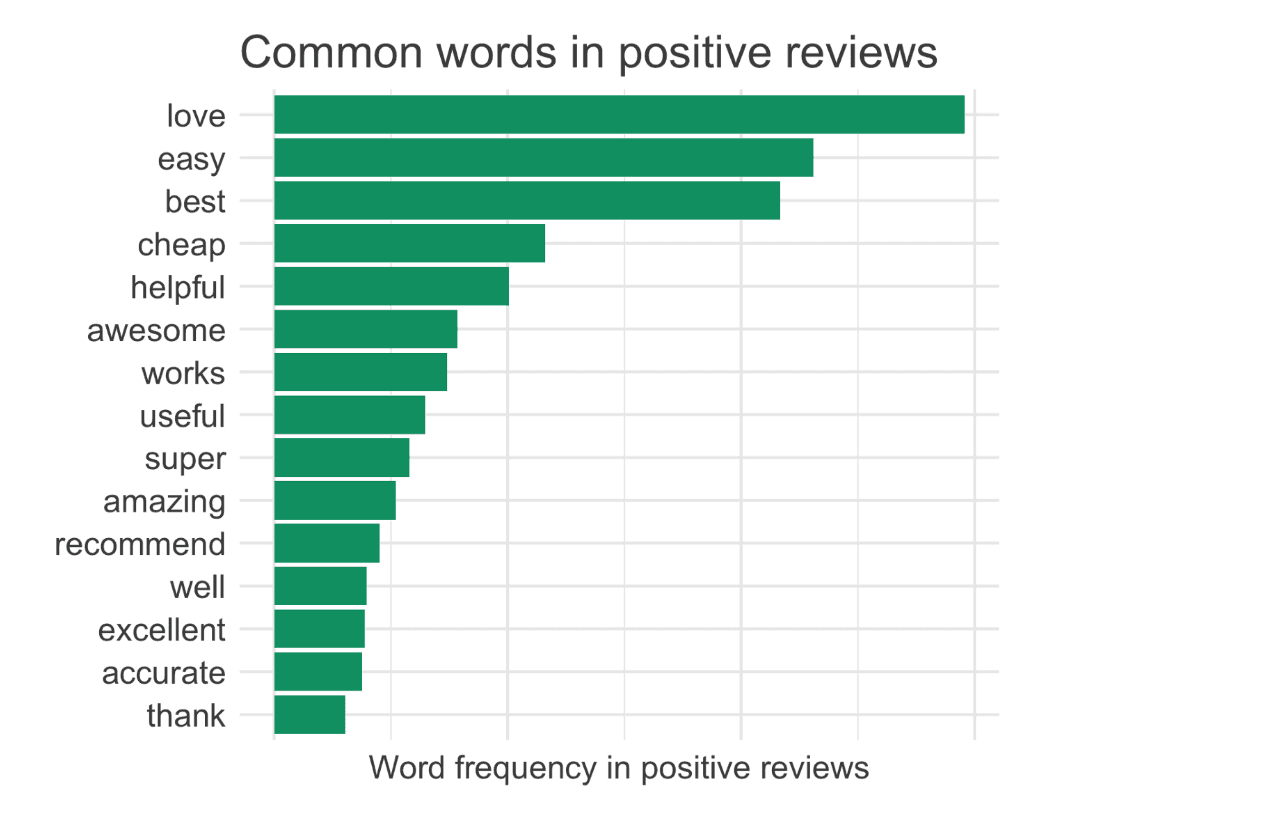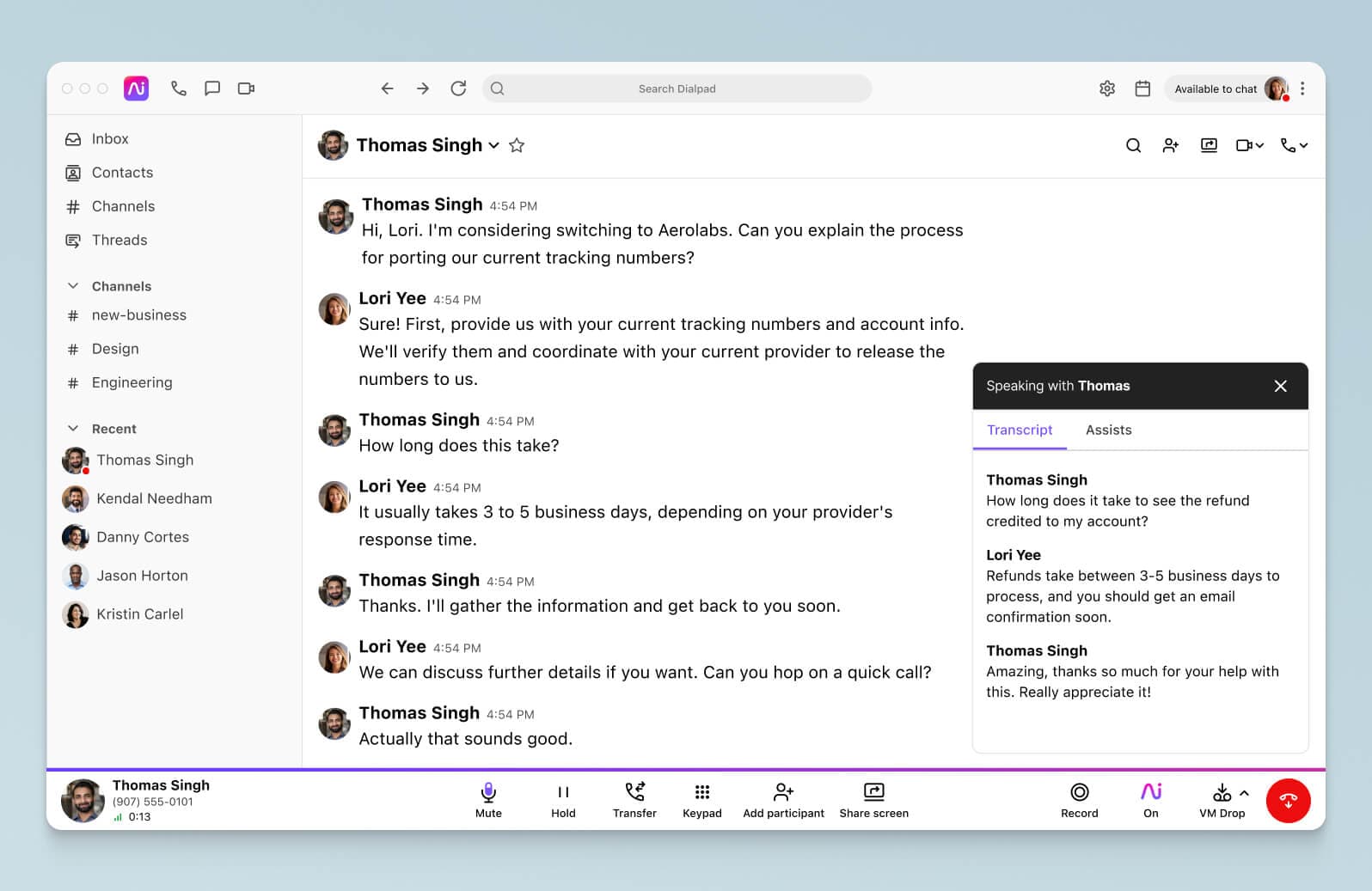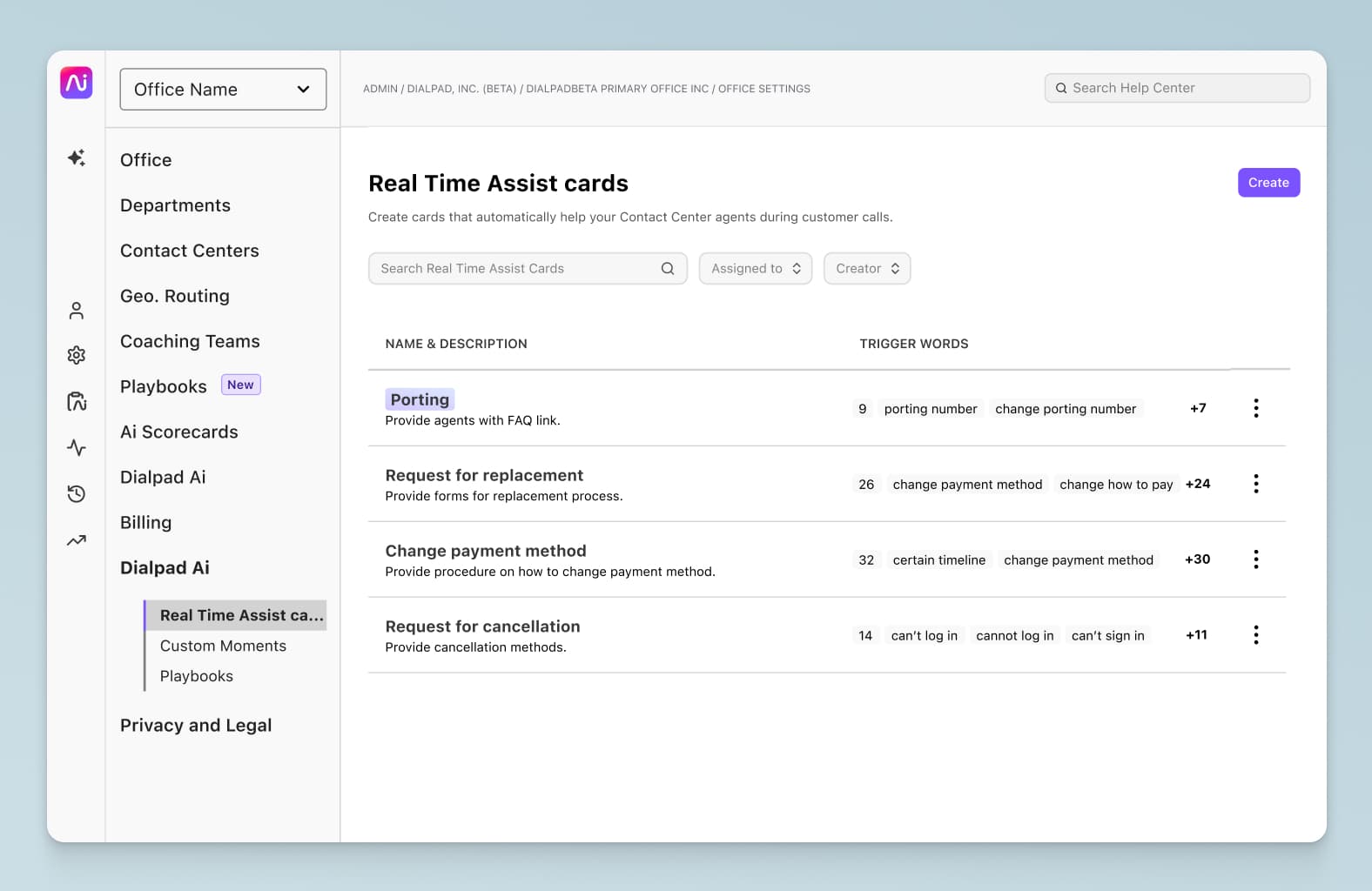How to choose a good sentiment analysis tool: A guide

Applied Scientist, AI Engineering

Director of Content

Tags
Share
When it comes to sentiment analysis tools, there is a huge variety of different software that can do sentiment analysis in different ways and for different purposes.
In this guide, we’ll walk you through a few examples of these use cases, show you how sentiment analysis software works, and share some of the best tools that are designed to help businesses provide a better customer experience (and employee experience).
Let’s get started with a quick refresher of what sentiment analysis means.
What is sentiment analysis?
Essentially, sentiment analysis is the process of figuring out how a person feels about something. Typically, this “something” could be a business or brand, a topic, a sports team, or whatever you can think of.
Usually, when you hear about sentiment analysis, it’s in a business context. And for businesses, they can typically assess customer sentiment in a few ways, like by analyzing transcripts from conversations (text analysis) or the audio recordings themselves.
What are sentiment analysis tools? What can they do?
Sentiment analysis tools are, as the name suggests, software that can analyze how your target audience feels about a certain topic or brand.
For example, Dialpad uses artificial intelligence and natural language processing (NLP) to transcribe calls in real time—this is a key feature in our product, Dialpad Ai Contact Center, which is used by customer support, sales, and other teams that handle high volumes of calls and inquiries.
A different text analysis tool might scan customer reviews for specific keywords to give you an idea of the kinds of things that are being said about your business. Here’s a quick look at some typical positive words customers use to describe their experiences with businesses:

Of course, sentiment analysis doesn’t have to be limited exclusively to gauging written customer feedback.
The same technology you’d use to filter through reviews for opinions can often also be used for other platforms. For example, you might use social media sentiment analysis to do opinion mining and see what’s being said about your brand in social media posts.
Contact center management
Businesses that have contact centers have hundreds if not thousands of conversations every day. Because of this, contact center sentiment analysis is important because it helps supervisors and managers keep an eye on multiple calls at once.
The goal of a feature like this is to show managers at a glance which conversations are going well and which aren’t, which helps them quickly decide whether they need to jump in to help the agent who’s talking to the customer.
Ultimately, this makes the job easier for both the supervisor and the agent—and also improves customer satisfaction and the overall customer experience.
✨ UPLEVEL YOUR CONTACT CENTER
Grab the Contact Center Playbook, which breaks down everything you need to know, from setup to improving customer satisfaction—with examples from real contact center teams across different industries.
Marketing research
On a related note, you can use sentiment analysis to set the groundwork for future marketing campaigns.
Through text mining on social media and online review websites, you can discover the overall sentiment that’s being expressed towards your marketing strategies using online sentiment analysis tools. This helps inform your future approach to crafting strategies, ensuring you can learn from past mistakes and capitalize on any successes.
With sentiment analysis software, you can continuously refine and improve your marketing campaigns.
Social media monitoring
It’s always a good idea to stay on top of your brand health, or what’s being said about your brand, on social media. However, that doesn’t mean you want to spend ages scouring various social media platforms in search of mentions of your company in Tweets and Facebook posts.
Instead, you can use a sentiment analysis tool to do this for you.
Sentiment analysis software can keep track of social mentions for you, so you always hear about it when people talk about your business. This is a huge advantage when it comes to automating your social media management.
What to be aware of when choosing a sentiment analysis tool
How does it assess complex expressions?
Pretty much any sentiment analysis tool worth its salt will be able to pick up very basic phrases like “I am happy” or “I am angry”.
Realistically speaking, few customers will speak in such a clear-cut way. They might say something like ‘thanks to the service I’ve received, I’m feeling much better than I was when I first called’, or ‘the company took too long to get back to me’.
You’ll want to be sure that your sentiment analysis tool handles these kinds of complex expressions appropriately, and that its categorization system accounts for complexities.
Can it handle many different data sources?
A tool built purely for managing text analytics is going to offer less utility than one that can process brand mentions across all relevant platforms.
In other words, your sentiment analysis tool should be able to process incoming data from lots of different data sources. This gives you the best overview of the brand sentiments that are expressed each day and lets you gauge your own brand reputation more accurately.
Can it do real-time analysis?
When the goal is to monitor conversations as they’re happening, you need real-time speech analytics that can keep up with the pace of those conversations.
Your analytics tools have to be able to provide those real-time insights to empower your agents and supervisors to provide a consistently excellent customer experience.
How can you “test” sentiment analysis tools to see which ones are good?
There are enough different sentiment analysis tools out there that you won’t have to just take the first one you see in a quick search and hope it does the job. Instead, consider testing the tool to gauge its potential, and to see how good of a fit it’s going to be for your company.
If you’re wondering what to test to get a solid idea of the quality of the software, we’ve got you covered. Simply check for the following criteria.
Test on negation “I’m not happy”
Some sentiment analysis tools work by cross-referencing words in the text or audio they’re analyzing with internal dictionaries that are sorted by sentiment. For example, they’d flag up any use of the word “happy” as an indication of a speaker in a good mood.
But what happens with negations like “I’m not happy”?
The tool would still pick up “happy”, but if it’s poorly designed, it won’t register the “not”. It might also notice the “not”, but fail to consider it more important than “happy”.
Checking for an appropriate response to negations helps you guarantee that your analysis tool can handle real-life data.
Test for bias (different pronouns, dialects, people’s names)
Your sentiment analysis tool should be as unbiased as possible. 100% free of bias? Likely impossible, but it should try to get as close as it can. There are ways to test this—for example, by testing whether it can pick up on pronouns, names, and any other considerations for inclusive language that are relevant to your business.
For example, at Dialpad, we’re working to teach our AI different dialects and accents. Currently, its strength is in US English, but we have target audiences in other countries like Australia and New Zealand as well. Because there is such variety in sounds across accents and dialects, many AI models will have trouble transcribing things correctly because of those differences in pronunciation.
For example, at Dialpad, we’re working to teach our AI different dialects and accents. Currently, its strength is in US English, but we have customers in Australia and New Zealand too. Because there is such variety in sounds across accents and dialects, many AI models will have trouble transcribing things correctly because of those differences in pronunciation.
Here are a few instances where US English-exclusive training would lead an AI to seriously misunderstand Australian English speakers:
Original word spoken in Australian English | Mistranscription |
Shirt, sure | Sh*t |
Friday | Fraud |
Heater | Hater |
Scooters | Screwed |
These transcription errors easily lead to misunderstandings, and in some cases, could lead AIs to mislabel the sentiments they detect.
It’s also important to think about localization issues like linguistic cues. For example, swearing in US English doesn’t carry the same sentiment as in Australian English. These sorts of things have to be taken into consideration when training an AI.
📚 Further reading:
Get a behind-the-scenes look at how Dialpad’s AI team makes our sentiment model explainable.
Test on degrees “I’m not very happy” vs. “I’m alright”
A sentiment analysis tool that assumes “delighted” and “okay” are the same degree of happiness is not a very well-calibrated tool. That’s why you’ll want to test on degrees and ensure your tool of choice can differentiate between different “levels” of the same emotion or category.
A good sentiment analysis tool should be able to identify positive, negative, and neutral sentiments. The latter is particularly important, since not every sentence, word, or phrase is necessarily positive or negative:
Sentiment type | Example sentence |
Positive | I absolutely love this feature! |
Neutral | I'll look into that tomorrow. |
Negative | I'm extremely upset about this. |
A few types of approaches to sentiment analysis
Fine-grained
This type of sentiment analysis focuses on using highly specific sub-categories to classify detected sentiments.
Let’s break that down into simpler terms.
Most sentiment analysis tools will create “fuzzy” distinctions for the sentiments they detect, which let them separate statements or audio clips into “very positive”, “positive”, “neutral”, “negative”, and “very negative”. These fuzzy categories are called as such because they’re quite broad.
The fine-grained approach takes classification one step further. It might, for example, separate the nebulous “neutral” category into “suggestions for improvement”, “non-emotional remarks”, “no feedback given”, and any other heading that helps understand the actual nature of the neutral content.
Aspect-based
When customers write reviews, they don’t typically do so with the idea of their opinions becoming your text data in mind. That means they tend to mention lots of different, separate points (or, as it happens, aspects) in a single review.
Aspect-based sentiment analysis picks up on any categories that get mentioned and detects the sentiment that’s being expressed about them. That’s why it’s generally used in product review sentiment analysis tools.
For example, let’s say a customer writes something like “I love their products, but their customer service was just okay”. An aspect-based tool would register a strongly positive sentiment about your products, alongside a slightly negative one about your customer service.
A major advantage of this kind of approach is that it gives you an aggregate overview of the opinions expressed about each aspect of your business. It also lets you directly address any issues raised in customer reviews, which is particularly important when almost all new customers consult those reviews before making a purchase.
Emotion detection
If sentiments are the things people feel about your company, emotions are the things they feel in general.
This might make it seem like emotion detection is simply a more zoomed-out version of sentiment analysis, but the opposite is actually true.
Sentiments tend to be positive, neutral, or negative. Emotions, however, are as infinitely complex as human beings, and there are lots of different emotions people might feel, particularly with regards to brands and companies.
In other words, emotion detection as an approach is similar to fine-grained analysis. The major difference is that while fine-grained tools focus on separating the three standard sentiments into sub-categories, emotion detection-based tools emphasize an understanding of emotions. (Is your customer happy? Frustrated?)
Intent analysis
This approach focuses more on the intentions behind the words being said than on the words themselves.
To put that another way, intent analysis aims to give you a deeper understanding of customers’ opinions by analyzing those thoughts and then predicting the intent behind them. (Does the customer want to buy a product, or just get help for something they already purchased?)
The 17 best sentiment analysis tools
Depending on your specific use case and business intelligence needs, the “best sentiment analysis tool” for your business will be different. Do you want to analyze sentiment in written customer reviews? In social media messages? Or do you want real-time analysis of your customer calls? Below, we’ll look at the best tools across a few of these categories.
Category: Real-time contact center sentiment analysis
1. Dialpad
If you need a real-time customer sentiment analysis tool that tells you if any of your customer calls are going south, Dialpad Ai Contact Center gives you this.
What’s unique about it is that it’s built directly into Dialpad’s contact center platform. That means your customer support or contact center agents can handle all internal communications with their teammates and managers, and talk to customers—from a single app.
This AI-powered feature is included in all of Dialpad Ai Contact Center’s pricing plans—in other words, you won’t have to pay extra for it or manage it separately.
How it works: When the AI is turned on (you can turn it on or off manually, or set it to automatically be turned on for all customer conversations), Dialpad will automatically transcribe voice calls in real time:

Not only that, it can also do live sentiment analysis by detecting positive, neutral, and negative sentiment based on what’s being transcribed. This way, a busy manager who’s overseeing a large team of agents and multiple active calls can still quickly see if any customer calls are going south:

If so, they can just open up the transcript, which gets updated in real time as the conversation is happening, to get more context before deciding whether to jump in to help the agent.
Side note: The accuracy of the transcription here is very important, of course, since that’s what sentiment analysis feature uses. Dialpad’s real-time transcription is more accurate than almost all leading competitors, and its machine learning gets more accurate the more that it learns, thanks to self-improving algorithms. (So far, it’s analyzed over three billion minutes!)
Not only that, Dialpad Ai can also pop up Real-time Assist (RTA) cards to help agents talk through tricky subjects. A manager can create RTA cards with tailored notes for different topics and set them to trigger automatically on an agent’s screen when certain keywords or phrases come up on calls:

This way, supervisors don’t have to personally sit in on every call to help agents, but agents can still get the information they need to answer customer questions. It’s like training—at a massive scale.
Are you running a contact center team?
Need a real-time sentiment analysis tool? Book a product tour to see Dialpad Ai Contact Center in action!
2. Repustate
Repustate is a sentiment analysis tool that’s marketed as being able to analyze both customer sentiment and employee sentiment.
Unlike Dialpad, Repustate doesn't analyze conversations in real time. The use case is a bit different. Repustate is more for analyzing videos, social posts, surveys, and documents—in other words, existing content in different formats.
Category: Other text-based sentiment analysis
The next set of tools on our countdown are designed solely for analysis of text. That said, they do give you the ability to analyze and assess inputs from a wide range of sources.
3. MonkeyLearn
Much like Dialpad, MonkeyLearn uses a machine learning model to help you see how your customers feel about your business.
It’s made up of distinct modules for distinct purposes. For example, Tweet Sentiment gives you insights into Tweets, while Product Sentiment focuses on products, and so on.
4. Lexalytics
Lexalytics is a tool whose key focus is on analyzing sentiment in the written word, meaning it’s an option if you’re interested in text posts and hashtag analysis.
Unlike Dialpad, though, you wouldn’t use Lexalytics for social listening or customer calls. According to Lexalytics’ website, the best use case for it is if you need to analyze a high volume of text (their estimate: roughly 30,000 docs a month).
5. Rosette
With an AI that can help you tackle content in six languages, Rosette is another multilingual sentiment analysis tool.
What’s interesting is its machine learning-based AI is trained using mainly Tweets and reviews, and is designed to analyze sentiment on people, products, and companies.
6. Meaning Cloud
This sentiment analysis API is another text analytics tool. It comes with multilingual functionalities, and can analyze everything from news headlines and social media to video subtitles and call transcriptions.
Category: Standalone, copy-and-paste text-based sentiment analyzers
7. Sentigem
This tool is free, and because of this, way less feature-rich than many of the other options above on this list.
Sentigem is, however, easy to use. All you need to do is paste a section of text you’re looking to analyze into the text box on the website, and it’ll automatically be categorized into positive, negative, or neutral sentiments.
8. SentiStrength
SentiStrength calls itself a sentiment analysis (“opinion mining”) program. It uses a scale of -5 (extremely negative) to 5 (extremely positive) to describe the sentiments present in a piece of text. It’s trained to be compatible with slang and non-business language, meaning you can use it in various contexts.
While there’s an academic-use version available for free, you’d have to pay to use its business model.
9. ParallelDots
ParallelDots is a sentiment analyzer that’s geared towards retail businesses. What’s unique is it comes with image recognition along with text analysis features that are designed to evaluate open-ended responses from customers and pinpoint sentiments within them.
(It also has an Excel and Google Sheets plug-in if you like spreadsheets.)
10. RapidMiner
RapidMiner is an interesting option on this list. It doesn’t consider itself a “sentiment analysis tool” per se, but a data science platform that does text mining in unstructured data to figure out sentiment.
A few examples of the “unstructured data” they’re talking about: online reviews, social media posts, call center transcriptions, claims forms, research journals, patent filings, and more.
Category: Social media sentiment analysis
These tools are designed to help companies understand what customers and others are saying about them across social media networks through analyzing test and emoji. Some of these tools combine sentiment analysis with a certain degree of social listening functionality.
11. Brand24
Brand24 is a social media monitoring tool that lets you filter positive and negative brand mentions on networks like Twitter and Facebook. It also includes some interesting metrics like “influencer score” so you can track whether someone who said something good (or bad) about your company is influential enough to potentially cause issues.
12. Awario
Awario calls itself “the sentiment analysis tool for social listening,” and can track your brand mentions on social media platforms, forums, news sites, and more. With Awario, you can track reactions to marketing campaigns, your competitors’ social media sentiment, and more.
What’s nice is it generates graphs and word clouds to give you a visual representation of your brand sentiment.
13. Clarabridge
This is another sentiment analysis tool that specializes in processing content from social media platforms, as well as chat-based text and content from apps like WeChat.Clarabridge can also identify the topics these conversations cover, which is somewhat unique and helps you contextualize what’s being said about your brand.
14. Hootsuite Insights
Offering tools targeted towards large enterprises, Hootsuite Insight lets you conduct social listening and gain insight into real-time conversations happening worldwide—and of course, integrates with its core social media management platform.
15. Talkwalker
Talkwalker is a sentiment analysis tool that processes data from social media platforms and other relevant websites in over 187 languages. This helps it give you a broad overview of the opinions expressed about your company worldwide, at any given time.
16. Keyhole
Like the other tools in this section, Keyhole does social media analysis and can process data from multiple social media outlets including influencer channels, frequently used hashtags, and textual content. Using this information, it then generates a sentiment score for your brand based on how many positive and negative sentiments it detects.
17. Brandwatch
Brandwatch processes 496 million social posts each day, in addition to the more than 1.4 trillion posts in its database. It creates customer insights for you based on sentiments found within all of this social content.
Which sentiment analysis tool is best for your business?
As you can see, there are different types of sentiment analysis tools that can show how sentiment across a range of content types like social media posts and customer conversations.
If you have a customer support, sales, or other types of contact center team that has a high volume of conversations every day, you might want to consider a sentiment analysis tool that can show you sentiment in real time. This will help your agents and supervisors be proactive and address customer concerns before they get so angry that there's no turning that relationship around.
See contact center analysis in action!
Book a demo of Dialpad Ai Contact Center to see how your business or organization can use sentiment analysis to provide a better customer experience. Or, take a self-guided interactive tour of the app on your own!








